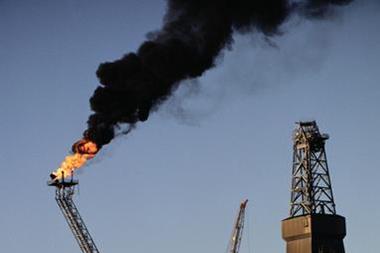How will the ELD work in practice? Cliff Warman gives some pointers
Over recent years, a number of regulatory requirements associated with reducing the environmental impact and ensuring the effective remediation of legacy environmental liabilities have been placed on businesses.
With the implementation of the EU’s Environmental Liability Directive (ELD), and its transposition into national legislation in each of the EU member states, comes a regulatory framework which requires a more responsible approach to environmental risk management. This is achieved through the prevention and mitigation of potential environmental damage and the concept of giving the environmental an inherent ‘value’ as a resource, in terms of scope of remediation required should environmental damage actually occur.
The Environmental Damage (Prevention and Remediation) Regulations (2009) in the UK defines how businesses will be required to take all practicable steps to prevent environmental damage without delay, where there perceived to be an imminent threat of significant damage, and how operational businesses will be held liable for any environmental damage actually caused. In addition, the concept of remediation has been extensively extended to include activities necessary to ‘compensate’ the environment for the damages that have been caused, either on a site basis or on a temporal basis,or both.
The main driver behind the concept of giving the environment and natural resources an inherent value by implementing such a regime is to promote the degree of responsibility that a business must take in potential environmental impacts and to ensure that the polluter pays. In addition, the ‘precautionary’ principle has been adopted to ensure environmental damage is prevented and mitigated wherever possible.
These principles require that operators are fully aware of the risk they run, in terms of the potential for environmental damage to be caused, and to assess the potential scenarios that could lead to an imminent threat of environmental damage or to an actual environmental damage event.
A number of high impact environmental incidents have occurred over recent years, which would likely have been covered by the auspices of the new ELD should it have been in place at that time. However, due to the fact that the directive does not impose retrospective liability, the environmental damage caused did not infer such liability. High impact incidents Some of the highest profile environmental damage incidents are characterised by spillages of highly toxic chemicals to sensitive aquatic habitats, such as surface watercourses.
“Environmental liability is now a critical risk issue in many firms.
One such spill occurred due to the run-off of chemicals into the River Rhine in 1986. The incident started with a fire at a pesticide and herbicide manufacturing plant in Switzerland, and as a result of the large volumes of water used to put out the fire, high concentrations of pollutants, with a high toxicity to flora and fauna, entered the river. The pollution migrated down the length of the river, across a number of national boundaries, killing entire populations of fish, with some species being completely eradicated. Preventative action in this case could have included the capacity to retain large volumes of surface run-off (firefighting water) on the site rather than releasing to the river, an thus a highly proactive approach would have been required to anticipate the potential environmental damage that could be caused by a large scale fire at the site.
In a similar case of a fire at a chemicals storage and distribution site in the UK, the resulting pollution was caused again by fire water run-off, augmented by the impact of fire-fighting foam entering a neighbouring river, and causing significant environmental damage to the natural habitat and the fauna. In this case the Environment Agency was mobilised to immediately undertake a degree of clean-up on the river. The Environment Agency latterly sought to reclaim the costs of the clean-up work from the chemicals company. It is understood that the scale of the on-site and off-site clean-up associated with this incident totalled several millions of pounds. When the chemicals company tried to claim the costs for cleanup of the river from their public liability insurer, on the understanding that the fire was a ‘sudden and accidental’ event and, as such, third party clean-up costs should be covered, the insurer in this case declined to pay. The reason for declining the claim was stated as being that the regulator’s claim for statutory costs would not be defined as ‘damages’ to a third party, and as such was not covered.
In both of these cases, the environmental damage caused was due to a contingent risk associated with a primary damage event, ie a fire, and the resultant pollution was caused by the activities associated with the putting out of the fire.
The amount and extent of remediation likely to be required under the ELD in these types of environmental damage cases would likely include the rehabilitation of the environment which had been impacted. In the case of a highly dynamic habitat such as a river, it could be envisaged that both complementary remediation, and compensatory remediation would be required. For example, where a river that has been impacted cannot be cleaned up and rehabilitated to the extent that it is deemed to have returned to a ‘baseline’ condition, (ie the physical and ecological condition that existed before the damage occurred), then rehabilitation work at another, equivalent site would likely be required. In addition, where the remediation work on the impacted river would require many months or years of work to get the habitat back to the baseline status, compensatory work at another site or habitat would likely be required to compensate the environment.
It is clear that environmental liability is now a critical risk issue for many firms. The ELD has been structured to imply liabilities for companies that cause ‘environmental damage’, and not just companies that cause ‘pollution’. It is therefore crucial that firms take into account potential issues associated with non-pollution related environmental damage, such as sediment run-off, or severe vibration that could cause environmental damage, without any requirement for a pollution event. Firms that fail to fully address their environmental risks do so at their peril.
Postscript
Dr Cliff Warman is leader of the environmental practice in Europe, the Middle East and Africa at Marsh



















